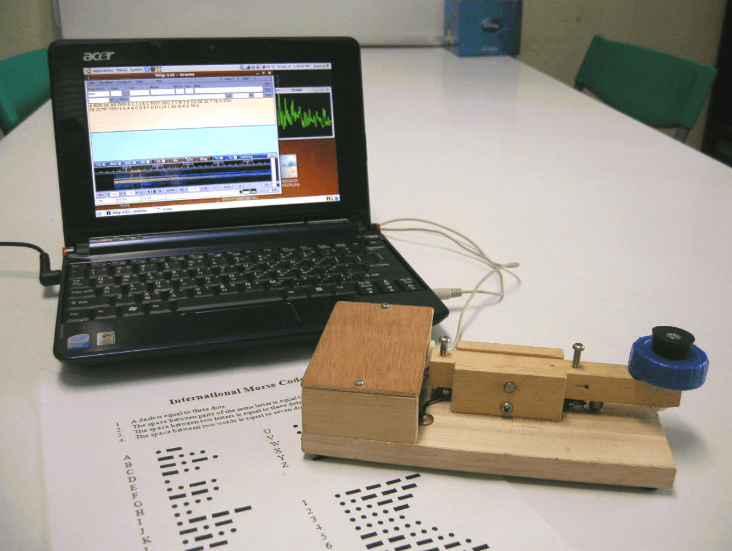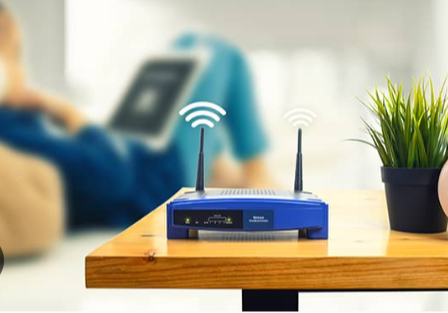Building a Morse Code Translator: Tools and Techniques
Morse code is a form of communication whereby textual information is spelled out using a combination of dots and dashes to represent letters, numbers, and symbols. It continues to be used, especially in situations where verbal communication is not possible. The major applications of Morse code include wireless communication, sending and receiving telegraph messages, and emergency communication.
To build a Morse code translator, several tools and techniques must be understood by developers and testers alike, including those involved in QA processes, as quality assurance ensures the translator functions accurately under various conditions. A solid understanding of programming languages is also essential.
In this article, we will cover why building a Morse code translator is important and how innovations are transforming the future of Morse code translators. We will also discuss its various types and some effective key features, along with the tools and techniques required to build a Morse code translator. So let’s start by understanding what exactly a Morse code translator is.
What a Morse Code Translator
A Morse code translator is a digital application that transforms text into Morse code (dots and dashes) and the opposite. Morse Code Translator is designed via a complex algorithm to translate text and express it in Morse code, which is indicated by a sequence of dots and dashes. It employs some strategies to keep these dots, dashes, and spaces to form letters, numbers, and punctuation. Anyone with a computer or smartphone can now access this process due to the modern translators’ digital age.
The sequences are decoded back into legible text when users input Morse code. To provide accurate translations, the tool also complies with normal Morse code guidelines, such as the spacing between words and letters. Morse Code Translator helps to enhance understanding and memorisation abilities. It guides on rhythm and timing using an intuitive audio feature that is beneficial to both beginner and advanced learners.
Why Building a Morse Code Translator is Important
Building a Morse code translator can be used in several creative and educational contexts, improve emergency communication, and aid in learning and using the skills of Morse code. A more detailed analysis of the importance of Morse code translators may be found below:
Accessibility
By allowing text to be converted to and back to Morse code, Morse code translators make learning the code easier for testers interested in becoming proficient. Many translators provide both visual (as dots and dashes) as well as vocal (as sound) answers. These strategies are useful in learning the rhythms and patterns in Morse code.
Emergency Communication
Where other methods of communication are not very effective or are out of service, an alternative method of communication can be achieved using Morse code. Morse code can be sent a long way with simple equipment, like a radio or a torch. Around the world, the SOS signal in Morse code is recognised as an indication of concern.
Applications in education and creativity
Morse code translators will assist testers in learning about the communication system, increasing the ability to identify patterns, and refining problem-solving methods. They can be applied to learn the historical value of Morse code in communication technology, as well as be able to read old messages.
Bridging the Digital and Analogue Worlds
Morse code is a different form of communicating with technology and is the best alternative for interaction where other regular interfaces fail. It offers an important understanding of the principles of communications systems and the processes of information and transmission.
Types of Morse Code Translators
Morse code translators can generally be categorised based on their input and output types.
Text-based Morse Code- These translators convert written phrases into corresponding forms of Morse code. They can be useful in encoding messages or learning the Morse code alphabet. They accept Morse code either by being fed a keyer (or similar) or by audio, and decode into readable text. They are applied to decode messages that are sent in Morse code.
Combined Text/Morse Code Translators– Certain translators provide both encoding and decoding functions, enabling testers to toggle between text and Morse code formats.
Image-based Morse Code Translator
Image-based Morse code translator is an application that translates the text in the images into Morse code or Morse code to text based on the recognition and translation of the images. The image is normally processed to get the text using optical character recognition (OCR), and then the extracted text is either encoded or encoded using a Morse code translator.
Audio-Based– A speech-based Morse code translator is an application that translates speech to (and/or from) Morse code. It processes what is spoken and translates the same into the relevant Morse code dots and dashes, and reads them through voice recognition technology. Alternatively, it can decode audio or written words in Morse code into intelligible speech in a chosen language.
Key Features of Morse Code Translators
Real-time/Instant Translation
Translations should ideally occur as typed, or with minimal lag, enabling interactive engagement.
Speed Control (WPM/Farnsworth)
Modifying the words per minute (WPM) and Farnsworth speed lets testers learn at their own pace and adapt to their skill levels.
Tone/Frequency Control
The possibility to set the tone of the Morse code tone (frequency of the tone) can help to be synchronised with individual hearing or equipment possibilities.
Light/Flash Control
If the translator offers visual output (like a light), being able to modify the flash rate or brightness is advantageous.
Audio Feedback (Sound):
The sounds of Morse code (dits and dahs) can be produced by the translator to help learning and confirmation.
Visual Feedback
In some cases, others apply flashing lights as a representation of Morse code, which proves to be helpful in complicated situations.
Vibration Feedback
Vibration may also be used as a substitute for feedback in cases where people may be visually impaired or in noisy environments.
Input Methods
The translator should take keyboards, microphones, or even a camera as input to be able to recognise Morse code visually (e.g., in an image of a telegraph key).
Offline Availability
Its ability to provide offline translation or use it even with no internet connection is beneficial in remote usage or when connectivity is poor.
User-Friendly Interface
A user-friendly, non-technical, and easy-to-trek design is a key to its effective usage. The possible features that can largely increase the accessibility of broad users and people with impairments are text-to-speech functionality, a high level of contrast, and the ability to change font size.
See also: A Beginner’s Guide to SSL Monitoring for Website Security
How Does LambdaTest Free Morse Code Translator Helps?
LambdaTest offers a free, user-friendly Morse Code Translator that allows you to easily convert text to Morse code and vice versa. This tool is particularly useful for developers, testers, and anyone interested in learning or utilizing Morse code.
Key Features
- Text to Morse Code Conversion: Simply input your text, and the tool instantly translates it into Morse code using dots and dashes.
- Morse Code to Text Conversion: Enter Morse code, and the tool will decode it back into readable text.
- Audio Playback: Listen to the Morse code translation with the built-in audio feature, which helps in learning and verification
- No Sign-Up Required: Access the tool directly without the need for account creation or login.
- Cross-Browser Compatibility: The tool is designed to work seamlessly across various browsers, ensuring accessibility for all users.
LambdaTest also provides a robust platform for QA testing, allowing teams to run cross-browser and cross-device tests seamlessly. With its automated visual testing capabilities, you can catch UI inconsistencies across multiple environments without manual inspection.
Screenshots and comparisons are generated automatically, highlighting visual deviations so issues can be fixed before deployment. This makes it easier to maintain consistent user experiences and ensures that applications look and perform perfectly across all browsers and devices.
How Morse Code Translation is Evolving
AI-Enhanced Translation Technologies
Facial movements can be translated into Morse code with the help of AI algorithms. They enable individuals with serious disabilities to interact and use devices only through their facial expressions.
Real-Time Interpretation
AI-driven systems can interpret Morse code instantly, promoting communication across various environments, including assistive technologies and possibly augmented reality.
Enhanced Speed and Precision
AI algorithms, especially those equipped with time-tracking features, can improve both the speed and precision of Morse code recognition, reducing the learning curve for users. Organisations have created systems that utilise hand detection algorithms and AI to establish a strong and effective communication channel for users with speech impairments.
Integration with New Technologies
Augmented reality applications can be implemented with Morse code. This may bring new ways of engaging the digital world with the real world.
Voice Recognition Synergy
The auxiliary input method can use Morse code. It protects redundancy, and it can improve communication in noisy environments.
Multicoloured and 3D QR Codes
The concept of communicating information using different symbols and designs. It includes multicoloured and three-dimensional QR codes, draws on the encoding principles inherent in Morse code, even if it is not exactly Morse code. This could increase data capacity and interactivity.
Ongoing Importance in Certain Areas
Morse code is still a dependable form of communication. It is especially applicable in the military and aviation areas where fast communication is needed.
Assistive Technologies
The systems of translation of Morse code are essential to disabled users. They enable users to interact and control devices when others are unusable or difficult to use.
Understanding Data Encoding
Construction of the Morse code can support fundamental principles of data coding that are relevant to other programming and data representation practices.
Historical Relevance
Morse code was invented during telegraphy and has since been adapted to different modern needs. Its long history is proof of how early communication technologies have shaped present-day communication habits.
Tools and Techniques: Building a Morse Code Translator
A Morse code translator can require a few tools and technologies:
Programming Languages
A developer should be able to incorporate programming languages like Java or Swift to create an application that translates Morse code. The code enables the application to behave in different ways. These languages are used in writing the code.
Mobile Development Frameworks
A developer would also require using mobile development frameworks like Xcode or Android Studio. These frameworks offer tools and resources required for developing and testing mobile applications on various platforms.
Audio Processing Libraries
The development of a Morse Code Translator may require the use of an audio processing library like OpenAL or FMOD. Audio versions of Morse code may be created by using these libraries. These libraries give the application the ability to listen to audio files and manipulate several audio playback features.
User Interface Design Tools
A developer who is developing the user interface of an application may require a tool such as Adobe Photoshop or Sketch. With such tools, developers can create and construct graphical elements of an application. These factors include the visual and design composition of the user interface.
AI Testing Platform
AI platforms improve the translation of Morse code significantly through machine learning. They can facilitate the translation of Morse code to text and vice versa more accurately and efficiently. By analysing a diversity of input resources, these platforms are capable of adapting to a diversity of communication situations with the use of AI. This will involve audio signals, visual signals (like that of lights flashing or expressions on a face) and even hand gestures.
Conclusion
In conclusion, creating a Morse code translator may be a difficult yet rewarding task. A successful Morse code translator can be designed by a team with the required skills, following defined methods. This results in building an easy-to-use Morse code translator that will satisfy user expectations. Although the demand for Morse code translation has increased, it is still popular and may be an effective tool for users who are interested in knowing more or using Morse code as well.






